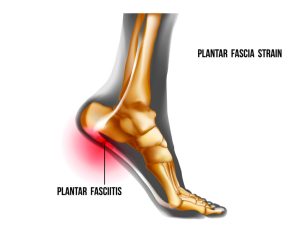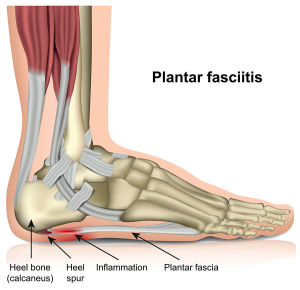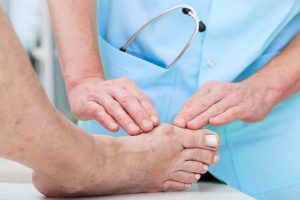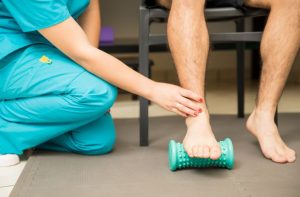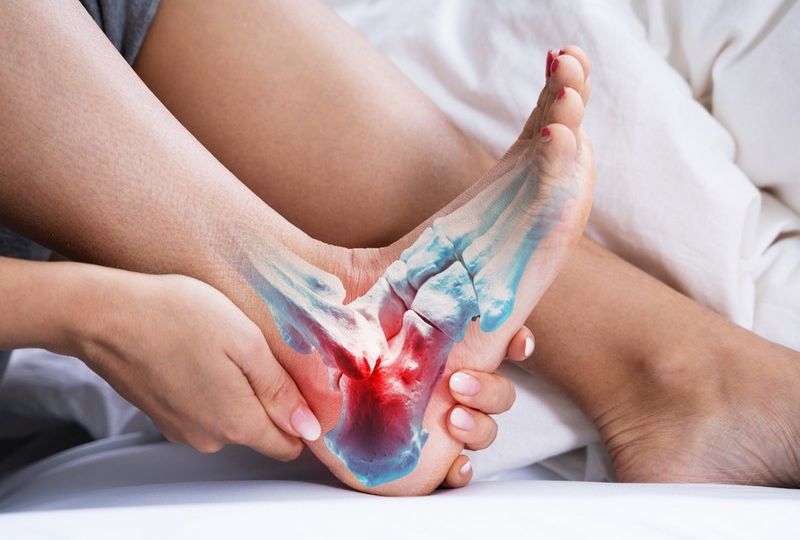
Did you know that one in ten people will experience the sharp, stabbing pain of Plantar Fasciitis at some point in their lives? It’s a figure that might surprise you, but for those who have felt the discomfort, it’s all too real. Plantar Fasciitis, a common foot ailment, often strikes like a sneak attack – one minute you’re fine, and the next, you’re wincing with every step. But what exactly is Plantar Fasciitis? Why does it happen, and more importantly, how can you get back to stepping pain-free? Let’s unravel this mystery and explore the journey from the initial twinge of pain to finding lasting relief.
Why Does Plantar Fasciitis Happen Anyway?
Let’s get down to the nitty-gritty: what causes this pesky foot condition? Think of your plantar fascia as a shock-absorbing bowstring supporting the arch of your foot (1). Too much tension and stress on that bowstring can create small tears in the fascia. Repeated stretching and tearing can cause the fascia to become irritated or inflamed. But what exactly triggers this?
- Too Much, Too Soon: Are you suddenly channeling your inner Usain Bolt or trying to beat your personal best every day? Overzealous exercise, especially running, can stress your plantar fascia.
- Footwear Faux Pas: Love those flat, thin-soled shoes? They might not love you back. Inadequate footwear can contribute to Plantar Fasciitis, as can wearing high heels regularly.
- The Weighty Issue: Your feet bear the brunt of your body weight. Extra pounds mean extra stress on your plantar fascia. Maintaining a healthy weight can help ease the burden on your feet.
- Age and Occupation: Hate to break it to you, but aging doesn’t just bring wisdom. Plantar Fasciitis is more common as we age, particularly between 40 and 60. And if your job involves a lot of walking or standing on hard surfaces (looking at you, factory workers, and teachers), you might be more prone to developing it.
- Foot Structure Flaws: Born with flat feet or high arches? Or maybe your feet roll inward excessively when you walk (overpronation)? These traits can affect the way weight is distributed when you stand and put added stress on the plantar fascia.
- The Athletic Angle: If you’re active and engage in activities that place a lot of stress on your heel and attached tissue (like ballet dancing or long-distance running), you might be at a higher risk.
Symptoms: More Than Just a Foot Ache
The symptoms of Plantar Fasciitis are like an unwanted alarm system. The most common one is a sharp, stabbing pain near your heel. Let’s break it down:
- Morning Misery: It’s like your foot is on a mission to ruin your mornings. The first steps after waking up can feel like walking on pins and needles.
- Pain After Rest: Sit down for a while or stand for too long, and your foot might protest when you get back up. It’s as if your foot hates both rest and work equally.
- Post-Activity Pain: Here’s the twist – the pain might skip the actual activity time and hit you afterwards. So, you might finish your jog pain-free, only to be caught off-guard by pain later on.
- Swelling and Stiffness: Sometimes, your foot might also throw in some swelling or a tight sensation, just to mix things up.
Diagnosing Those Pesky Foot Pains
When it comes to figuring out if it’s Plantar Fasciitis, your doctor will play detective. They’ll prod around your foot, checking where it hurts. This helps them rule out other foot villains like fractures. Occasionally, they might call in backup in the form of X-rays or MRIs to get a clearer picture.
Treating Plantar Fasciitis
Treatment for Plantar Fasciitis focuses on relieving pain and inflammation and strengthening foot muscles. This multifaceted approach can include:
- 1. Home Remedies: Your First Line of Defense
-
-
- Rest and Ice: Sometimes, the simplest remedies are the most effective. Give your feet a break! Reducing activities that cause pain, like long runs or standing for hours, is crucial. And don’t underestimate the power of ice – a cold pack on your heel for 15 to 20 minutes three times a day can work wonders in reducing inflammation.
- Over-the-Counter Pain Relievers: Nonsteroidal anti-inflammatory drugs (NSAIDs), like ibuprofen or naproxen, can help ease the pain and control the inflammation (2).
-
- 2. Physical Therapy: Strengthen and Stretch
-
-
- Exercise Your Way to Relief: A podiatrist can be your best ally. They’ll show you specific exercises to stretch your plantar fascia and Achilles tendon, which can help alleviate pain. Strengthening exercises for your lower leg muscles can also improve your foot’s stability.
- Don’t Skip the Warm-Up: Remember, gentle stretching before activities can prevent further strain.
-
- 3. Orthotics: Custom Support for Your Feet
-
-
- Arch Support is Key: Custom orthotics or over-the-counter arch supports can really take the pressure off your plantar fascia. They distribute your weight more evenly and can provide that extra cushioning your feet are longing for.
-
- 4. Medications: When You Need an Extra Push
-
-
- Anti-Inflammatory Medications: For those days when the pain is just too much, a prescribed anti-inflammatory medication can provide significant relief.
-
- 5. Advanced Treatments: For Persistent Cases
-
- Corticosteroid Injections: These can provide temporary pain relief when the inflammation is stubborn. They’re usually done under ultrasound guidance to ensure accuracy.
- Shock Wave Therapy: Think of it as a wake-up call for your foot to start healing. This treatment can stimulate blood flow and tissue repair.
- Surgery: This is usually the last resort, but for some, it’s a necessary step. If your pain is relentless and other treatments haven’t helped, surgical options like releasing part of the plantar fascia might be considered.
Preventing a Comeback
- Keep it Up!: Once you’re on the mend, don’t stop the good habits. Continue with foot exercises, wear supportive shoes, and listen to your body to prevent Plantar Fasciitis from making an unwelcome return.
Remember, Plantar Fasciitis is a journey – there’s no one-size-fits-all solution. It’s about finding what works for you, whether it’s icing your foot while watching TV or doing stretches during a work break. Consult with healthcare professionals to craft a treatment plan that suits your lifestyle and needs. With a bit of patience and the right approach, you can say goodbye to the pain and get back to enjoying life on your feet!
References
- Buchanan BK, Kushner D. Plantar Fasciitis. 2022 May 30. In: StatPearls [Internet]. Treasure Island (FL): StatPearls Publishing; 2023 Jan–. PMID: 28613727.
- Buchanan BK, Kushner D. Plantar Fasciitis. [Updated 2022 May 30]. In: StatPearls [Internet]. Treasure Island (FL): StatPearls Publishing; 2023 Jan-. Available from: https://www.ncbi.nlm.nih.gov/books/NBK431073/

